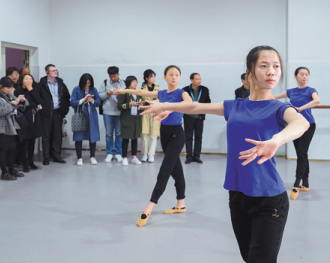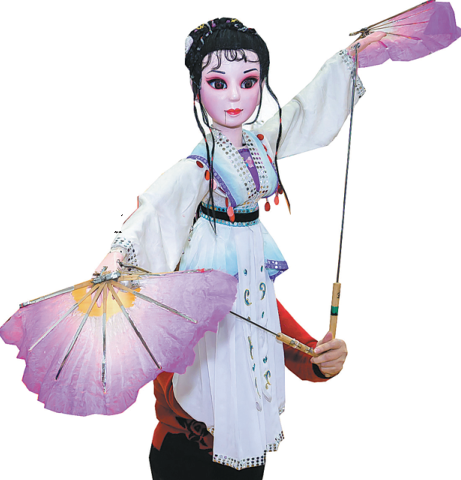Province sets excellent example for the preservation of local art forms, culture
The educational model being used at Yangzhou Culture and Art School in Jiangsu province should inspire other regions around the country facing challenges in preserving traditional art forms.
In late November, students at the public school were having lessons on various arts, including puppetry, folk dance, the Yangzhou ditty, a type of folk music, and Yangzhou Opera.
The school is a major part of local efforts to prevent traditional arts from disappearing by training young inheritors.
Students can enroll at the school at around 12 years old after graduating from primary school or at about 15 after middle school. Tuition is free for the three-year or six-year learning program, sponsored by the local government and performance groups.
Founded in 1958, the school has cultivated numerous winners of top Chinese arts awards, said Yin Deping, Party secretary of the school. He said the school is open to students nationwide and 230 out of some 800 candidates were enrolled this year. Some performance groups work with the school to train young talents who are then employed immediately after graduation.
According to Yin, previously just local art forms were taught, but the school has expanded to include other areas such as Huai Opera from Yancheng city in Jiangsu province, and Dan Opera from Danyang city.
There are teachers from Russia and Kyrgyzstan who teach classical ballet. The school is also working toward enrolling students from overseas.
Yan Yu, 71, is an inheritor of Yangzhou puppetry, a city-level cultural inheritance program. Yan is also a teacher at the school.
"Teaching in the traditional way, the student learns both the advantages and weaknesses of the master. The level of the master, to a large extent, limits the student," she said.
"But the school teaching is more comprehensive, and students can learn from different teachers and from each other. They also gain a broader scope of knowledge from art to general knowledge such as math and English."
Liu Zhixuan, 19, is one of the school's latest puppetry graduates.
For Liu, puppetry was introduced to her when she first saw a performance on stage.
"When the spotlight was on the silk fabric and the puppet, I felt like it was something I wanted to do and someone I wanted to become," she said.
Liu said she enjoys life at the school though she doesn't get to go back home very often.
Vu Khanh Linh, a reporter at Viet Nam News, who visited the school recently during the "Hi Jiangsu" media tour, said she learned "how the Chinese government is trying to preserve various forms of culture and art".
"The school has policies to teach students free of charge, who have the ambition in art and may perform for the local troupe and even the national troupe," she said.
She added that it's a good way to preserve traditional culture, which is not only a challenge in China, but in other countries including Vietnam.
Jakhongir Azimov from Dunyo Information Agency in Uzbekistan said he was impressed by the size of the school and how committed the students are.
Jiangsu province is carrying out various measures for the preservation and inheritance of traditional art and culture.
Besides free tuition, free space is provided for inheritors to display their works and sell products at the Yangzhou 486 Intangible Cultural Heritage Tourist Area. That includes Yangzhou paper-cutting, woodcarving, jade-carving, embroidery and lacquer-painting.
At the Nantong Blue Calico Museum, the first private museum for collection, exhibition, research, inheritance and protection of the blue calico art, founded in 1996, the media group was impressed by the unique dyeing technique.
"It's interesting because it's not only showing the expertise but teaching visitors how to do it in a simple way. I like the eco-friendly process. It's beautiful," said Linh.
The group also visited the Laomendong historic block which is composed of traditional architecture with black tile, gray walls and carved wooden panels. They experienced brick rubbings at the ancient wall which dates from the Ming Dynasty (1368-1644) in Nanjing, capital of Jiangsu.
Jintana Panyaarvudh, a writer for The Nation in Thailand, said: "Laomendong is calm and peaceful. We can see local people's lives."
chenmeiling@chinadaily.com.cn

Students at Yangzhou Culture and Art School rehearse dance routines. CHINA DAILY

Fellow members of the school perform Yangzhou Opera. WANG HUAZHONG/CHINA DAILY

An artist in Yangzhou performs a dance that features elements of puppetry. CHINA DAILY








